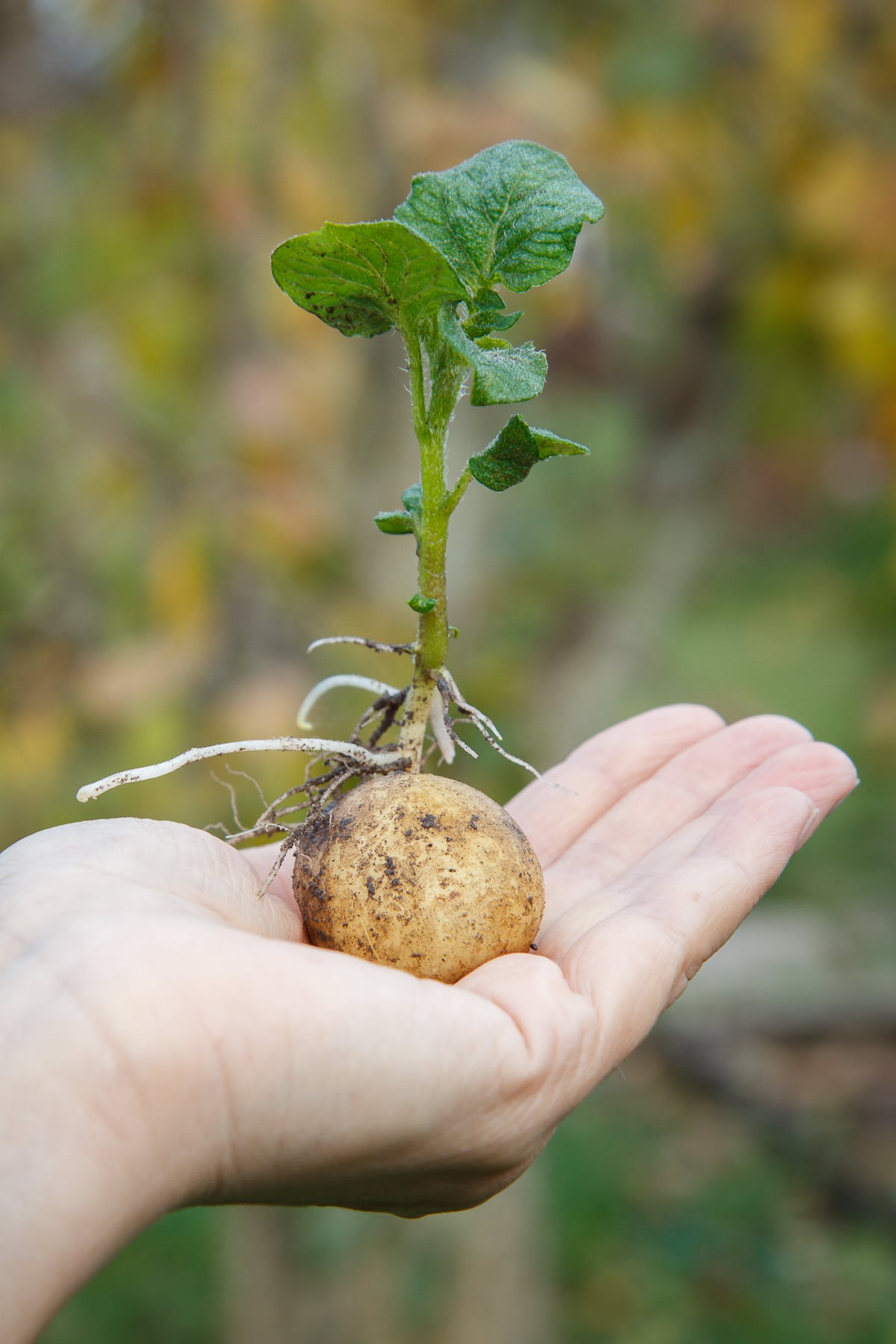Planting potatoes in autumn is a fantastic way to work with nature’s rhythm, setting the stage for a robust harvest next summer. Here’s a guide on why and how to grow autumn potatoes successfully, bringing your gardening to the next level!
The “Volunteer” Phenomenon
Despite careful harvesting, small potatoes often get missed, only to reappear as hardy “volunteers” in the garden come spring. These resilient plants flourish naturally, as potatoes prefer to grow as perennials. Originating from the Andes in South America, potatoes are naturally perennial, surviving winter and sprouting from their tubers as temperatures warm in spring. Even near Lima, Peru, wild potatoes grow as perennials along roadsides.
Why Plant Potatoes in Autumn?
Emulating the potato’s natural growth cycle by planting in autumn is entirely possible. However, for a more substantial harvest, it’s advisable to reserve most of the planting for spring. Autumn planting is ideal for smaller potatoes that may have turned green or those overlooked in the garden. Gardeners in Wisconsin, for example, find autumn planting advantageous as it allows the potatoes to establish themselves, making them better equipped to resist pests and weeds by spring.
Steps for Successful Autumn Potato Planting
To plant potatoes successfully in autumn, ensure the soil stays cool enough throughout winter. Ideally, the temperature at a depth of 8 inches (20 cm) should remain below 48°F (9°C). Potatoes begin sprouting once the soil reaches 50°F (10°C). Regular appearances of volunteer plants can also indicate favorable conditions for autumn planting. In regions with milder winters, where the soil doesn’t cool sufficiently, it’s better to wait until late winter, allowing potatoes to grow steadily through spring and mature before the intense summer heat.
Finding Seed Potatoes for Autumn Planting
During autumn, seed potatoes may not be available in nurseries. In this case, use any small, sprouting tubers leftover from your summer harvest or prepare market-bought potatoes. Allow them to sit in a warm, well-lit spot for a few days until they turn green—this green hue signals the development of natural compounds that deter pests. For autumn planting, plant whole potatoes instead of cutting them; divided potatoes are more susceptible to rotting in cold soil or being eaten by rodents. While spring-planted potatoes tolerate being cut, whole potatoes in autumn have a higher survival rate.
Mulching for Autumn Potatoes
Autumn offers an abundance of leaves, which make excellent mulch. A layer of leaves prevents soil compaction from heavy rain, keeps the soil cool on warmer winter days, and helps control weeds. While some gardeners place leaves directly in planting trenches, this step is optional. A well-covered soil surface prevents erosion and weed growth but avoid over-mulching, as it may trick potatoes into sprouting too early.
Conclusion
Planting potatoes in autumn is a brilliant approach to mimic nature’s cycle, setting up a strong start for a fruitful harvest next summer. With proper care and preparation, your potatoes can thrive, establishing themselves in autumn and growing vigorously through spring. 🌿🌞


Арматура диаметром 32 мм, изготовленная из стали марки А500С, является одним из самых востребованных видов металлопроката в строительстве. Она применяется при возведении фундаментов, армировании стен и перемычек. https://armatura32.ru